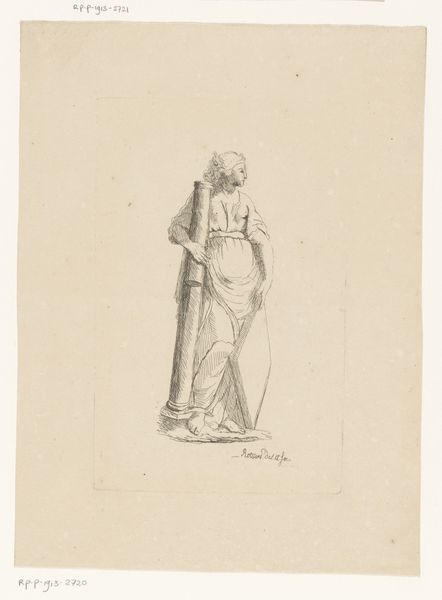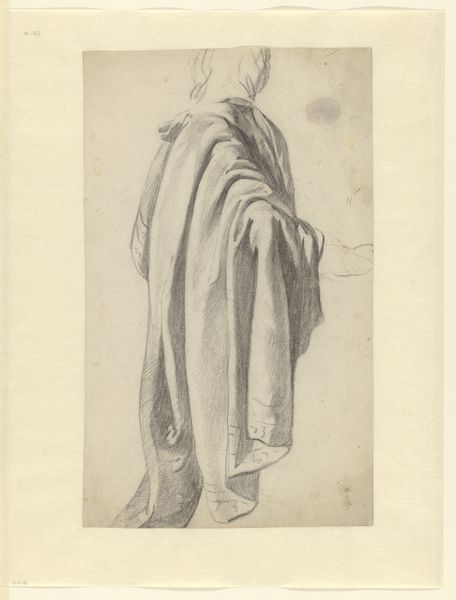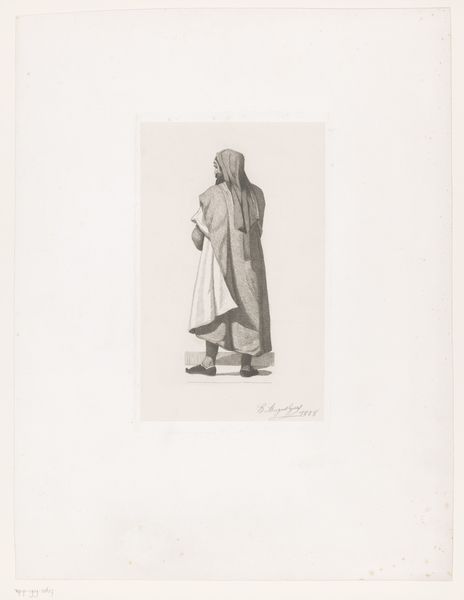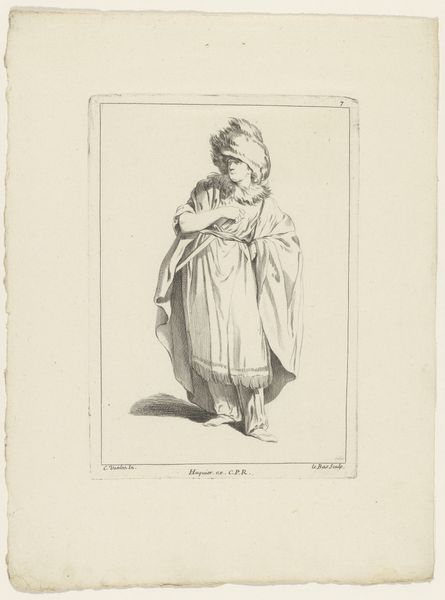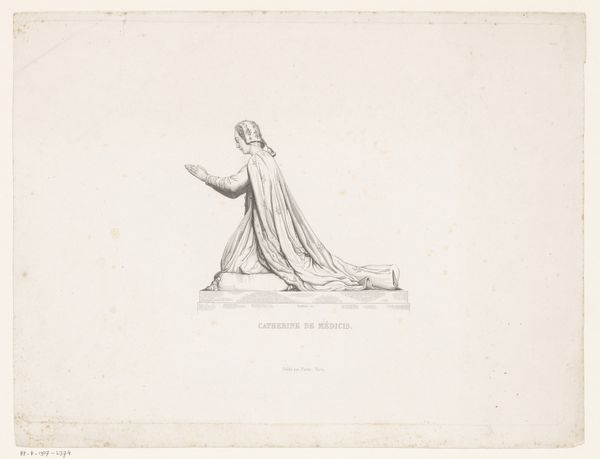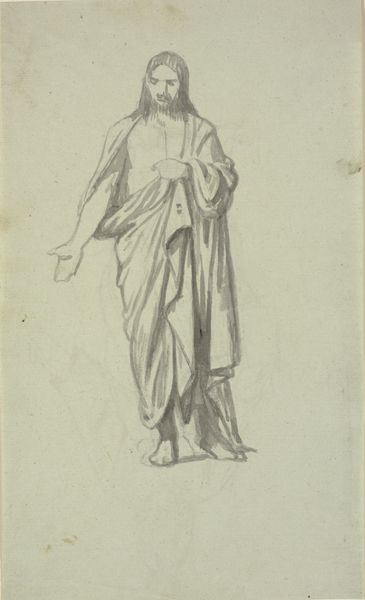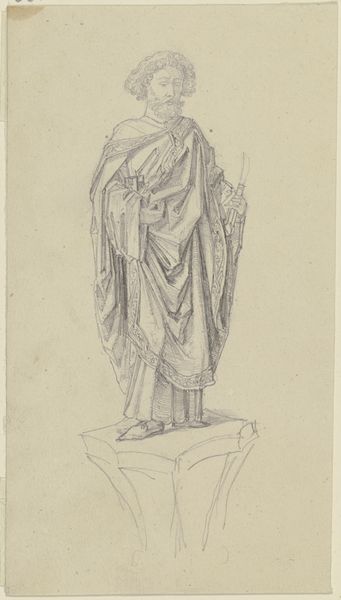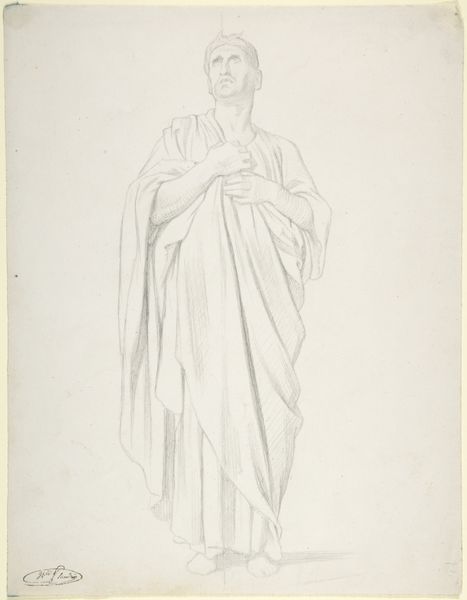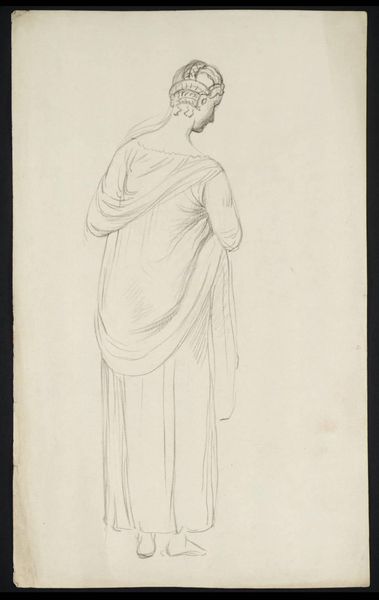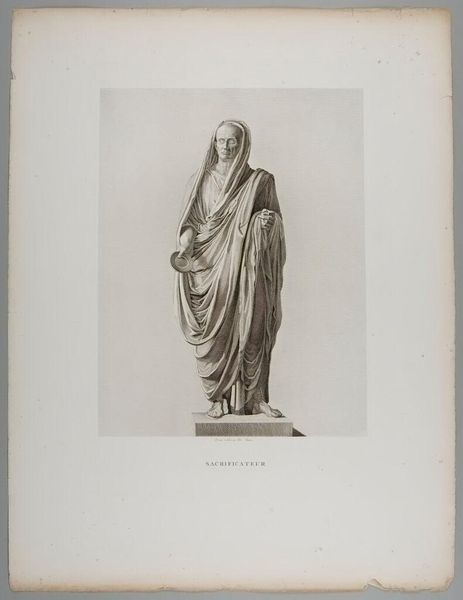
print, engraving
#
portrait
#
baroque
# print
#
figuration
#
academic-art
#
engraving
Dimensions: height 235 mm, width 165 mm
Copyright: Rijks Museum: Open Domain
Editor: Here we have "Staande figuur met omgeslagen mantel," or "Standing figure with a turned over coat" created between 1732 and 1740, an engraving by Jacques Philippe Le Bas. I'm struck by how the lines create such dimensionality despite being a print. What aspects of the composition stand out to you? Curator: Immediately, I'm drawn to the figure's verticality, countered by the dynamic sweep of the drapery. Consider the semiotic weight of the line itself. It is the sole instrument for constructing form and shadow, articulating the folds of the mantle, and defining the figure’s presence. The artist uses line as a system of signs; its density and direction convey volume and texture. Observe how the varying line weights, from delicate to bold, create a convincing illusion of depth and light. Do you see any specific formal relationships or repetitions in these lines? Editor: I notice the repetition in the cascading folds and how they guide your eye downward, emphasizing the figure's length. But how do we move beyond just describing the lines themselves? Curator: Think about the lines as structural elements and carriers of meaning. Notice how the density of lines create shade. These formal elements function as a closed system, generating a self-contained aesthetic experience. The absence of colour encourages an engagement with tonal relationships, highlighting the artist's mastery. What is the underlying structure informing the figure's stance and the drape of the cloak? Editor: That’s interesting. Looking at it again, the rigid, internal structure dictates how the draped mantle hangs on the body and falls to the floor. The composition is purely about these lines creating a proportional whole! Thanks for elucidating the language of the lines! Curator: It is through disciplined formal inquiry we uncover art's intrinsic properties. By doing so, we enrich the dialogue between ourselves and the work.
Comments
No comments
Be the first to comment and join the conversation on the ultimate creative platform.
